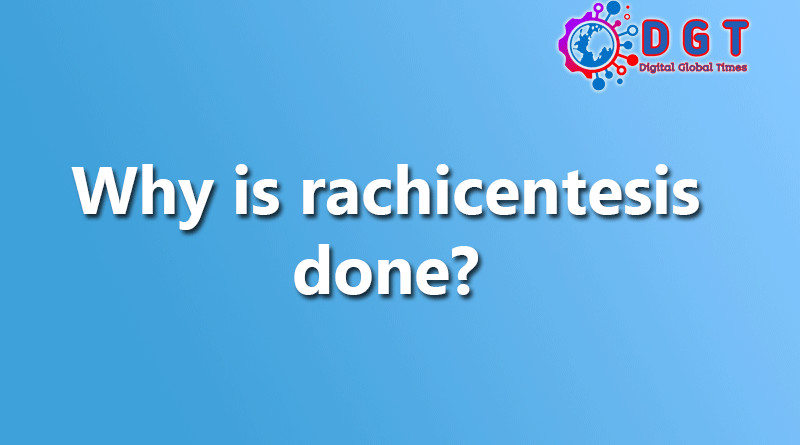Why is rachicentesis done?
Purpose Lumbar puncture is performed for diagnostic or therapeutic purposes: RACHICENTESIS DIAGNOSTICS: the aim is to collect a CSF sample to check for a possible infectious-inflammatory process affecting the brain (e.g. encephalitis, meningitis, Guillain Barre syndrome, etc.) .
Why is rachicentesis done?
Lumbar puncture is used to: Assess intracranial pressure and cerebrospinal fluid composition (see table Cerebrospinal Fluid Abnormalities in Various Disorders. More information)
What is the CSF test for?
To diagnose various conditions or diseases affecting the central nervous system (CNS), such as cerebral haemorrhage, autoimmune disorders, infections or tumors. The CSF examination is carried out in the event that the clinician suspects the presence of pathologies of the central nervous system.
How much rest after spinal tap?
The overall duration of the exam is about 30 minutes (the CSF sampling phase is a few minutes), after which the subject must remain prone for at least an hour, recommending bed rest for the next 24 hours. .
What is cerebrospinal fluid used for?
In other words, the cerebrospinal fluid participates in the exchange of metabolites and nutrients between the brain and blood. It contributes to the regulation of intra-cranial pressure and prevents cerebral ischemias.
Related questions
Where does the cerebrospinal fluid flow?
The CSF, also called cerebrospinal or cerebrospinal fluid, is the clear and colorless fluid that occupies the cerebral ventricles, the subarachnoid spaces of the meninges and the dural sac of the spinal cord.
Where does the cerebrospinal fluid go?
It then flows through the cerebro-medullary cistern until it surrounds the entire cord of the spinal cord and laps and protects the cerebral hemispheres. It then proceeds to discharge itself into the venous system through the Pacchioni granulations.
What to do after rachicentesis?
After spinal taps
After collection, the patient must remain in the supine position for a few hours (usually 2 or 3 hours are sufficient) to monitor the clinical condition.
How long does the headache last after spinal tap?
HEADACHE represents one of the most common problems in the immediate post-rachicentesis. It is estimated that over 40% of patients develop headaches shortly after the procedure is finished; the headache may last for a few hours or continue for 2-8 days.
How painful is rachicentesis?
The examination is not particularly painful; the sensation is similar to that of an intramuscular puncture. Once the sample is finished, the doctor removes the needle and tampons the point where the puncture was made. The amount of liquor withdrawn varies from 1 to 4 tubes according to the laboratory analyzes to be done.
How to rule out multiple sclerosis?
MRI allows the neurologist to make the diagnosis even at the first suspected episode of multiple sclerosis, because the examination can demonstrate the spread of the lesions in space and time (if there are active lesions, that is, those that pick up the contrast medium, and others that are not active, that is, non-capturing).
What are spinal cord diseases?
Transverse myelopathy. Brown-Séquard syndrome. Central cord syndrome. Anterior medullary syndrome.
How is the CSF test done?
The sample is obtained through a procedure called lumbar puncture (“rachicentesis”) which involves inserting a long, thin hollow needle between two vertebrae in the lower (lumbar) part of the spine, into the space where the CSF circulates. A few cc of liquid are extracted.
What is the bone marrow examination used for?
In oncology, bone marrow biopsy is performed to diagnose tumors of the blood, of the bone marrow itself or to evaluate the infiltration of tumor cells into the marrow.
Where is rachicentesis performed?
Spinal tap (or lumbar puncture) is a procedure in which a doctor introduces a long, thin needle (spinal needle) between two vertebrae in the lumbar region, i.e. in the lower back.
What is the name of the spinal needle?
Lumbar puncture needle Quincke type.
How to get rid of a spinal headache?
Headache attacks are intense and often associated with neck pain, meningismus, and vomiting. Headache is relieved only by assuming a fully lying position.
What does rachicentesis mean?
Spine is a type of lumbar puncture that has the diagnostic purpose of taking a sample of cerebrospinal fluid (or CSF) to be analyzed or has the therapeutic purpose of draining any excess CSF.
What is hydrocephalus?
Hydrocephalus literally means “water in the head”. Hydrocephalus is characterized by an increase in the volume of the cerebral ventricles as a consequence of either a reduction in brain mass or excessive production of CSF.
How painful is lumbar puncture?
Lumbar puncture is performed under local anesthesia. Lumbar puncture is usually painless. Rarely, it can be painful if the puncture site is inaccessible or osteoarthritis is present. Your doctor will evaluate the safety and feasibility of performing this procedure in advance.
How is the spinal cord removed?
The collection takes place in an authorized center, under general anesthesia (deep sedation) or epidural and takes about 45-60 minutes. The marrow is taken directly from the pelvic bones (posterior iliac crests) with the help of a syringe fitted with a needle.
Where are the Corioid plexuses found?
Nervous vascular formations located in the cerebral ventricles (in the two lateral, third and fourth ventricles). They appear as reddish cords with a granular appearance, and are formed by small arteries and veins wrapped around themselves and by a network of capillaries.
What is the liquid in the brain called?
150 cc of liquid in our head which are essential for our body. It is the cerebrospinal fluid (liquor), an element that allows our brain to float, protects it and carries nutrients.
Where does the reabsorption of the liquor take place?
The reabsorption of the CSF occurs mainly at the level of the arachnoid villi of the vault, located within the venous sinuses.
What is the Ependymal canal?
The ependymal canal (or central canal) represents the remnant of the primitive neural canal and contains a small amount of cerebrospinal fluid. The canal wall is lined with ependyma.

